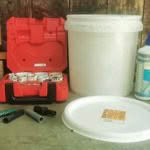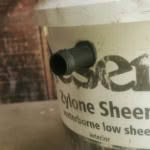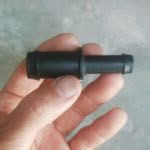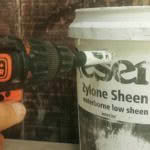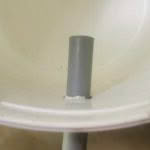How to keep a fly invasion under control
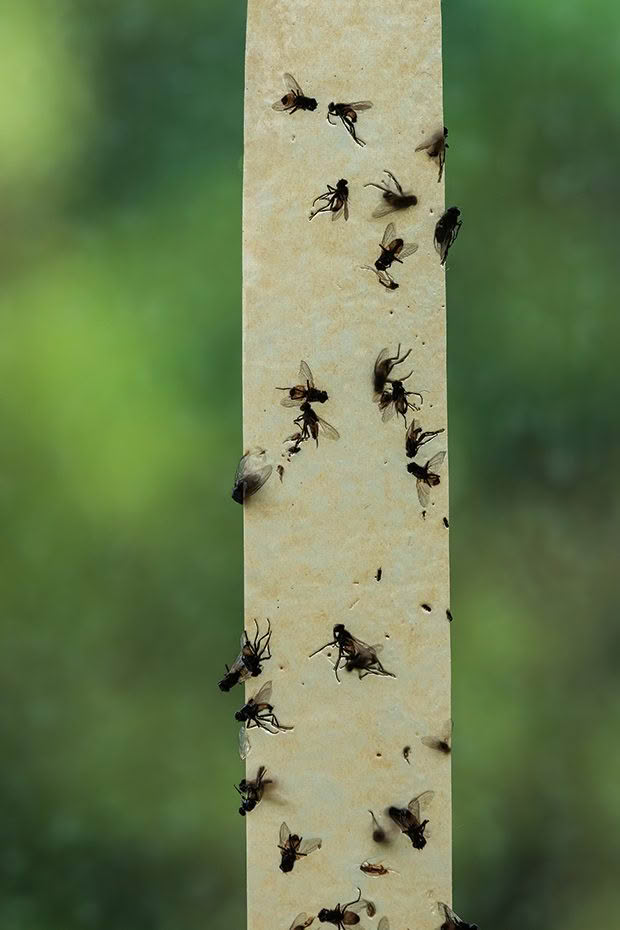
With flies mounting their usual late-summer assault on New Zealand’s rural properties, Nelson Lebo shares his tips to stiffen defences with an effective yet affordable homemade fly trap.
Words: Nelson Lebo
They were in the bedrooms. They were in the bathroom. They were in the compost caddy. Their constant defecation had left a galaxy of black specks across every wall and ceiling, like some kind of faecal Jackson Pollock painting.
A few years ago the situation had become so dire that my wife and our farm interns started a running tally on the chalkboard. Whoever killed the most at the end of the week would win a 250g Whittaker’s chocolate bar. Although I didn’t participate in the swatting spree, it seemed to be an improvement over the twin strips of fly paper with their grotesque harvest
of carcasses hanging at either end of our kitchen.
While I consider myself to have a relatively high tolerance for grunge, I absolutely hate fly strips. But when you’re desperate for some respite from the droning, buzzing onslaught that we rural property owners face every summer, you’re willing to try anything.
This summer has been a particularly bad one for flies in New Zealand. The wet weather that we were deluged with at the start of the year was a boon for the buzzing brutes, which thrive in moist, humid conditions. Fortunately, for the last few years my household has had a more effective fly-killing method than the fly strips and swatting competition, thanks to the sage advice of one of our neighbours.
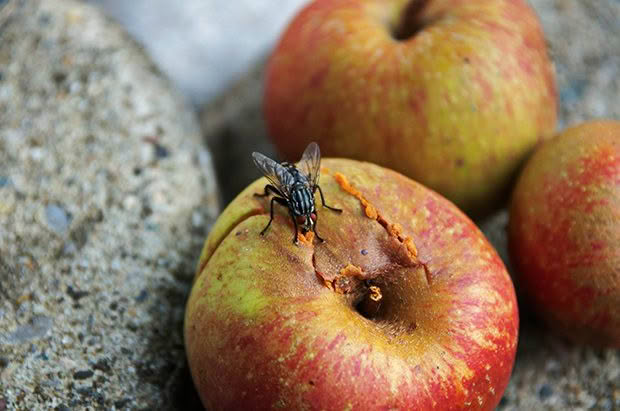
NEIGHBOURLY ADVICE
Around about the time our fly calamity had reached its peak, I popped over to a neighbour’s place to chat about possums, peacocks and rabbits. I was shocked to find his screen door wide open in the middle of the day and comparatively few flies in his home. He was happy to share his method, which promptly put an end to our fly problem for the remainder of that season and for years to come.
He showed me one of the two DIY fly traps he’d placed about 10 metres from his front and back doors, tucked into the shrubs.
“The flies go in and don’t come out,” he said. “Problem solved.”
That was four or five years ago and he hadn’t told me at the time where he’d learned how to make the traps. Bearing homemade halloumi, I popped around there recently to get some background for this article and asked about the origin of the trap. He silently pointed a finger at his head. “From here,” he said.
HOW IT WORKS
The concept is the same as many fish traps and even traditional hīnaki – eel pots – once used throughout New Zealand. In each case, the trap is baited and the entrance acts as a one-way door for the target species – be it a swimmer or flyer. The target species is lured through the entrance by the odour of the bait but then cannot find its way out due to the unique design. The flies fly around inside the trap to the point of exhaustion, eventually drowning in the water.
A short piece of alkathene pipe (or equivalent) is mounted so that it sticks 3 to 5cm into a bucket with a lid. On the outside, the pipe can be flush or slightly protruding from the bucket wall. The bait, sitting inside the bucket, will emit an odour outward through the pipe, luring the flies inward. But when it comes time for the flies to leave, they find it impossible to find the exit.
MATERIALS
an old paint bucket with a tight-fitting lid.
+/- 8cm of alkathene pipe off-cut (13mm) or a 19mm x 13mm reducer (see image).
silicone or glue.
hole saw or adequately sized drill bit.
1 litre of water.
1 small dead fish (or other putrid bait).
INSTRUCTIONS
1) Measure 5-10cm down from the top of the bucket and mark.
2) Drill a hole through the side of the bucket suitable for the pipe/reducer.
3) Secure the pipe/reducer in place so that it sticks at least 3cm inside of the bucket.
4) Pour in one litre of water.
5) Add the bait.
6) Seal the lid tightly.
Place the bucket in a suitable spot outdoors, ideally in full sun and somewhere near the entrance to your house. You can have more than one placed at different points around the property. The idea is to lure the flies to the trap before they enter your home. Before too long, the trap will start to stink and attract a swarm of flies, so you’ll want to put it somewhere out of the way where the odour and buzzing causes the least offence to you, your family, or your guests.
Although it’s immensely satisfying seeing the device trap the thousands of flies that would otherwise invade your home, you will need to empty it eventually; perhaps sooner than you thought depending on its efficiency. Dealing with the putrid soup of one fish and 1,000 dead flies is a truly disgusting task – I’d recommend using gloves, a nose peg and a good spade. Dig a hole two feet deep somewhere out of the way, open the lid, tip the foul contents in and bury before the odour causes you to pass out. Clean, add more bait and start over.
TYPES OF FLY
While every fly is arguably just as irritating as the next, they vary markedly in their physical characteristics and their behaviour. Learning about the different fly species and what they are attracted to is a useful exercise to control their numbers.
In New Zealand, we most commonly see the following flies:
HOUSE FLY (Musca domestica)
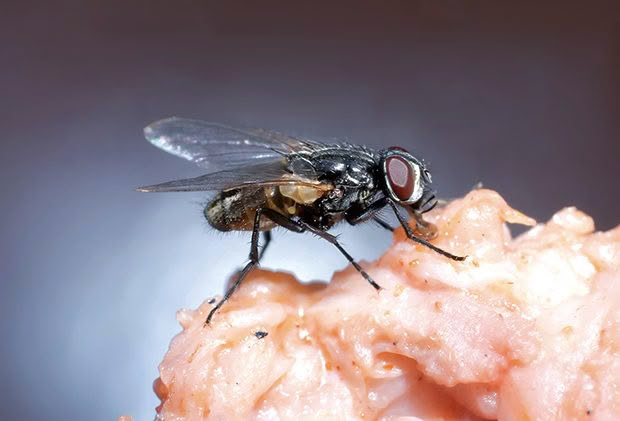
The everyman of NZ flies, the house fly gets its name from its common presence in houses in New Zealand and across the world. They are attracted to all types of food and waste, and favour moist, warm environments. House flies are major carriers of disease and will breed in decaying vegetable matter – such as an open rubbish bin – laying 120 eggs that will hatch maggots in up to 72 hours. House flies are 4-6mm long and typically only travel a few kilometres from where they were born.
BLOW FLY (Calliphoridae)
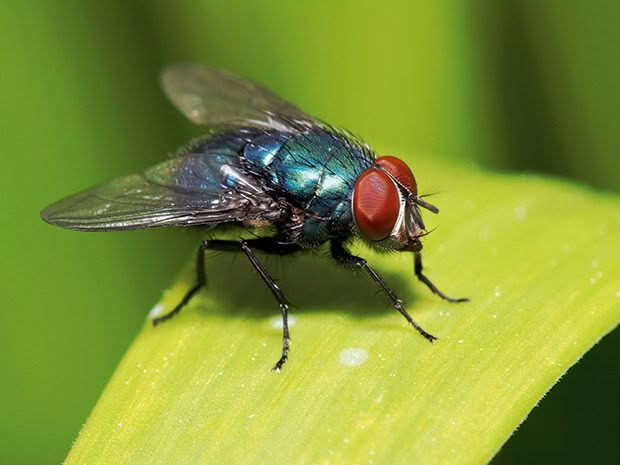
While this family of insects consist of around 1,900 species, blow flies – also known as bluebottles or greenbottles – are known for being larger than house flies with a metallic colouring. They are attracted to food smells and rotting or decaying matter. Unlike house flies, blow flies breed in rotting flesh or carcasses outdoors. If you notice an unusually numerous influx of blow flies in your house, chances are they’ve bred on a dead animal residing in the walls or under the floorboards.
In New Zealand, three species of blow fly are responsible for myiasis, or flystrike, in livestock. They are Lucilia sericata (common green blow fly), Lucilia cuprina (Australian green blow fly) and Calliphora stygia (brown blow fly). The flies lay their eggs on the skin of livestock and these hatch into larvae that burrow into the animal’s flesh and feed on its tissues.
Fly strike is a serious condition that can cause serious injury or even death if left untreated. The size of these flies depends on the species.
FLESH FLY (Sarcophagidae)
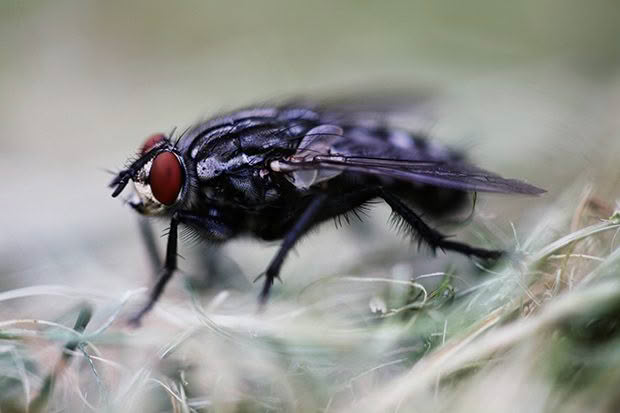
Similar to blow flies, flies in the Sarcophagidae family breed on dead carcasses and are drawn to the smell of food or rot. While blow flies have a metallic blue-green colouration on their thorax (middle section), flesh flies have black and grey stripes. Their size depends on the species.
CLUSTER FLY (Pollenia rudis)
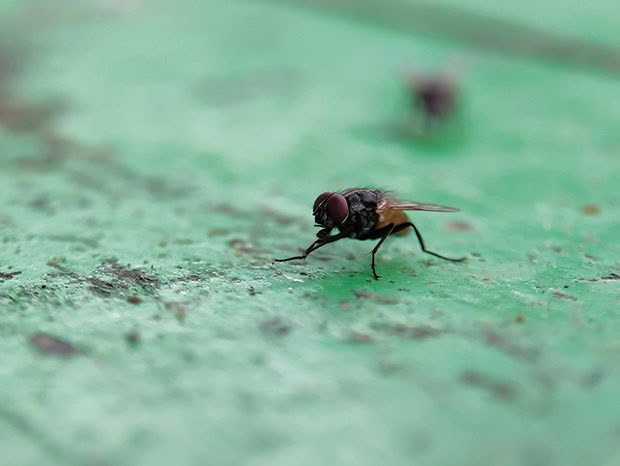
They may look like a version of a brown blow fly, but cluster flies do not lay eggs in human food so are considered harmless to humans and livestock. They get their name from their tendency to enter a home, and then cluster at the window in an attempt to escape. They are known to seek shelter from the cold in homes – typically attics. The typical cluster fly is around 7mm long.
Love this story? Subscribe now!
 This article first appeared in NZ Lifestyle Block Magazine.
This article first appeared in NZ Lifestyle Block Magazine.
